The Ford 1920 Tractor was one of the most popular tractors of its time. But also having Ford 1920 Tractor Problems. However, it did have some problems that owners had to deal with. One of the biggest problems was the engine.
The engine would often overheat and break down. This was a major problem because it meant that the tractor could not be used for long periods of time. Another problem with the engine was that it would often stall when going up hills.
Here are some common issues that owners of this tractor may experience:
- Starter Issues: The starter on the Ford 1920 can be finicky, and it’s not uncommon for it to fail completely. If this happens, you’ll need to replace the entire starter assembly.
- Hydraulic Problems: Another common issue with the Ford 1920 is hydraulic problems.
- The lift arms may start to leak, or the hydraulics may stop working altogether.
It’s not uncommon for the gears to slip or for the transmission to fail completely.
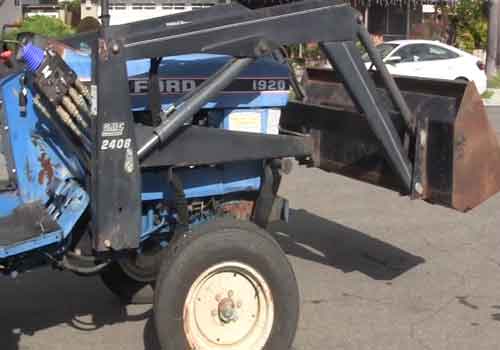
Ford 1920 Tractor Problems and their fix
The Ford 1920 Tractor’s most common Problems are-
- Starting engine problem.
- Not a running problem.
- Lack of lubrication.
- Carburetor problems and sluggish acceleration.
Fix
However, a problem that you might have is not a big deal for a Ford 1920 tractor, because there are many simple solutions for your tractor problems.
1. Starting engine problem fix
If Starting engine problem arises, first check the Battery connection and make it properly connected. If the battery is in good condition, then check all the cables if they are properly connected to the tractor.
Check whether the engine turns over or not, if the engine doesn’t turn over, check for a spark and clean the spark plug. If you hear no sound of the engine turning over, drop a little oil on the cylinder head and try again to start.
If all these steps don’t work out then try using starting fluid or starter fluid (PGM-71) 3 times. If the engine still doesn’t start after using these fluids, it means an ignition system problem.
Replace the spark plugs, distributor cap and rotor, and points with new good ones. If you still have problems after all these steps then we suggest replacing the starter.
2. Not running problem fix
If the tractor doesn’t start or if it is not running properly at low speed, you might have an internal problem in your tractor engine such as a broken valve or broken piston rings. To fix these problems first we should check all the simple things first.
Make sure that there is fuel and oil in the tank of your tractor. If there is not enough fuel in the engine, let it fill up with a little fuel, and then try again to start.
If your tractor still doesn’t start or run properly then you have a problem with the valve or engine timing. To fix this problem find out what is wrong with your valves and repair or replace them as necessary.
3. Lack of lubrication problem fix
One of the main problems that can cause a tractor to not run properly is the lack of lubrication in the engine. Normally, oil is pumped from a reservoir in the engine and circulates through the crankcase.
If not enough oil circulates through the system, the parts inside will get dry and this can cause starting problems or sudden loss of speed at low speeds.
4. Carburetor problem and sluggish acceleration problem fix
One of the most common tractor problems is a carburetor problem. If you are experiencing sluggish acceleration, loss of power or engine backfires, you might be having a carburetor problem.
The carburetor mixing bowl contains a float valve, which regulates the amount of gas and air that gets into the engine. Sometimes due to chemical reactions with fuel, varnish can build up in the bowl and cause this problem. Also, make sure that your air filter is clean and not clogged with dust particles.
It is very important to make sure that you are performing all the simple checks if your tractor gets stuck in a ditch or bog, otherwise, your tractor can be damaged.
How Much Horsepower Does a Ford 1920 Have?
The Ford Model T was introduced in 1908 and produced until 1927. It is powered by a 177-cubic-inch inline four-cylinder engine with a two-speed planetary transmission. The engine produces 20 horsepower at 1,800 rpm.
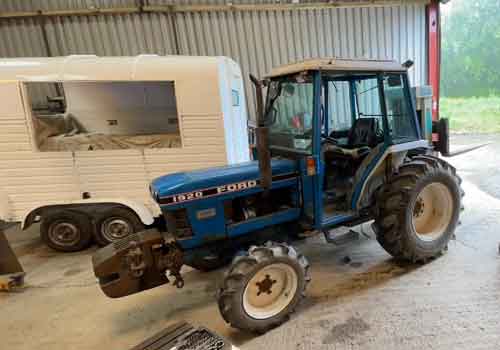
Read More about Craftsman T3000 Transmission Problems
Are Ford Compact Tractors Any Good?
There’s a lot to like about Ford compact tractors. They’re well-built and offer a good selection of features, making them a great choice for those in the market for a small tractor. Here’s a closer look at what you can expect from Ford compact tractors:
Build quality is very good, with solid construction throughout. The engines are also very reliable and offer plenty of power for most applications. A wide range of features is available, including hydraulic lift, PTO, and front-end loader compatibility on some models.
This makes them versatile tools that can handle a variety of tasks around the farm or property. Prices are generally reasonable, especially when considering the build quality and feature set on offer. There are some cheaper tractors out there but few offer such value for money.
What Engine is in Ford Tractors?
In 1948, Ford introduced the 8N tractor with a new “Harry Ferguson” three-point hitch system. This was the first Ford tractor to use the now familiar “Blue Oval” logo. The 8N was powered by a four-cylinder engine and was produced until 1952.
In 1953, Ford introduced the NAA tractor, which featured an updated version of the 8N’s four-cylinder engine. The NAA also introduced an optional five-speed transmission and power steering. production of the NAA continued until 1957.
In 1959, Ford released the 600 series tractors, which included the 620 and 640 models. These tractors were powered by a six-cylinder engine and featured an updated version of the three-point hitch system. The 600 series was replaced by the 700 series in 1962.
The 700 series included the 740 models, which were powered by a V8 engine. Production of the 700 series ended in 1964. In 1965, Ford introduced the 800 series tractors, which included models like the 850, 860, and 870.
These tractors were powered by six or eight-cylinder engines and featured updated suspension and hydraulic systems.
Production of the 800 series ended in 1975. The 900 series tractor was introduced in 1976 and included models like the 950, 960, 970, 1100 (introduced in 1978), 1110 (introduced in 1979), 1210 (introduced in 1982), 1310 (introduced in 1983), 1510 (introduced in 1984), and 1710 (introduced in 1986).
These tractors were powered by six or eight-cylinder engines and featured live hydraulics and PTOs as standard equipment. production of these tractors continued until 1992. In 1993, Ford released its last line of two-wheel drive agricultural tractors, the 4000 Super Dexta range.
These compact utility tractors were available with either 24 or 28-horsepower diesel engines. The Super Dexta range was discontinued In 2001 when ford exited from agricultural manufacturing altogether.
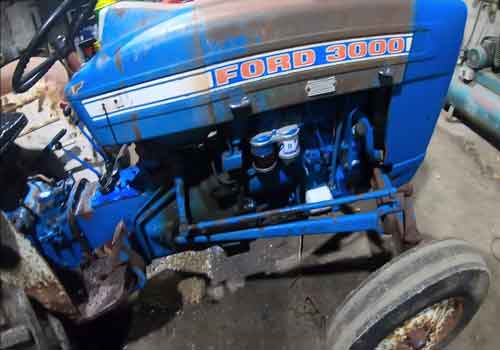
Ford 1920 Tractor Transmission
The Fordson Model F was introduced in 1917 as the first mass-produced tractor. But it wasn’t until 1920 that Ford began offering a transmission option on the Model F.
This made the tractor much more versatile and opened up a whole new world of possibilities for farmers. The transmission allowed the tractor to be used for tasks such as plowing, harrowing, and threshing.
It also increased the speed at which the tractor could travel, from 2 miles per hour to 5 miles per hour. The addition of a transmission made the Model F much more expensive, but it was still a very popular option among farmers. Today, transmissions are standard on most tractors.
But back in 1920, they were a cutting-edge innovation that helped make Ford’s tractors some of the most popular machines on the farm.
How to Replace Brakes on Ford 1920 Tractor
If you’re like most people, the thought of having to replace your car’s brakes is a daunting one. But with a little know-how and the right tools, it’s actually not that difficult—and it can save you a lot of money in the long run.
Here’s how to replace brakes on Ford 1920 Tractor:
- Jack up the tractor and remove the wheels.
- Unbolt the brake caliper from the steering knuckle using a wrench or socket set.
- Hang the caliper out of the way so that you don’t damage the brake line when removing the old pads.
- Use a C-clamp or other tool to compress the brake piston back into its bore.
- Remove the old brake pads and install new ones, being careful not to damage them with sharp objects.
- Reinstall the caliper and torque all bolts to specifications.
- Bleed any air out of the braking system according to your tractor’s manual before putting everything back together.
With these steps, you should be able to easily replace your tractor’s brakes yourself—saving time and money in the process.
Ford 1920 Tractor Hydraulic Fluid Level
If your 1920 Ford tractor isn’t lifting like it used to, the first thing you should check is the hydraulic fluid level. Low fluid levels can severely restrict the performance of your tractor’s hydraulic system, so it’s important to keep an eye on it. To check the fluid level, start by removing the filler cap from the reservoir.
Then, use a clean rag or paper towel to wipe away any dirt or debris that might be obscuring your view. Once the reservoir is clean, take a look inside and see where the fluid level falls in relation to the “full” line marked on the side of the reservoir.
If it’s below that line, then you’ll need to add more hydraulic fluid until it reaches the full mark.
Be sure to use only tractor-specific hydraulic fluid; other fluids can damage your tractor’s system and void its warranty.
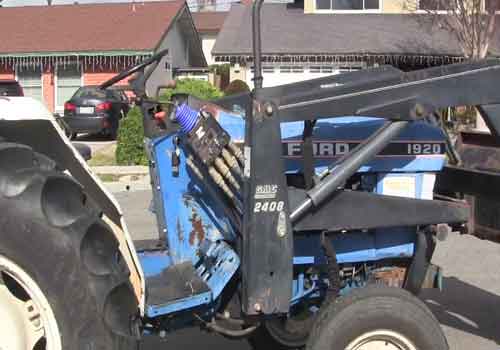
Read More About Craftsman Hydrostatic Transmission Problems
Ford 1920 Tractor Hydraulic Pump
When it comes to vintage tractors, there are few that can rival the Ford 1920. This tough little machine was built to last, and its hydraulic pump is a big part of that. The pump is responsible for supplying the hydraulic fluid that powers the tractor’s many moving parts, and it does so with ease.
The 1920 Tractor Hydraulic Pump is a reliable and durable piece of equipment that will keep your tractor running smoothly for years to come. If you’re looking for a replacement pump or just want to learn more about this important component, read on.
Ford 1310 Problems
If you’re the owner of a Ford 1310 tractor, you may be all too familiar with the various problems that can plague this model. From engine issues to hydraulic leaks, there are a number of different things that can go wrong with your tractor – and it can be frustrating trying to keep up with repairs.
In this blog post, we’ll take a look at some of the most common Ford 1310 problems and what you can do to fix them.
One of the most common issues faced by owners of the Ford 1310 is an engine that refuses to start. This can be caused by a variety of factors, including a bad battery or starter motor.
If you’re having trouble getting your engine started, make sure to check these components first before taking your tractor to a mechanic.
Another problem that often pops up with the Ford 1310 is hydraulic leaks. These leaks can cause all sorts of issues, from decreased performance to complete system failure. If you notice any sort of hydraulic leak on your tractor, it’s important to have it fixed as soon as possible by a qualified technician.
Finally, another relatively common issue with the Ford 1310 is electrical problems. These problems can range from faulty wiring to bad switches and everything in between.
If you’re experiencing any sort of electrical issue with your tractor, it’s best to take it to a qualified technician for diagnosis and repair.
As you can see, there are a number of different problems that can affect your Ford 1310 tractor. However, if you catch them early and address them quickly, they shouldn’t give you too much trouble. Stay on top of maintenance and repairs for your tractor and it will serve you well for many years to come.
Ford 1910 Problems
The Ford Model T was introduced in 1908, and production began in October of that year. The first cars were sold for $850, but the price soon dropped to $600. By 1912, half of all cars on the road in the United States were Model Ts.
However, as popular as the Model T was, it was not without its problems. One early problem was that the car had no reverse gear, so if you wanted to back up, you had to get out and push it. Another problem was that the engine would often overheat on long trips.
Later models of the Model T did have a reverse gear and an improved cooling system, but other issues continued to plague owners. For example, the brakes were often ineffective and could cause accidents. In addition, the car was difficult to steer at high speeds, making it dangerous on highways.
Despite its many problems, however, millions of Americans loved their Model Ts and continued to drive them until production finally ended in 1927.
Specification
| Model | Ford 1920 |
| Engine | 33HP |
| Steering | Power |
| Factory | Japan |
| Chassis | 4D |
| Fuel Capacity | 37L |
| Weight | 3000pound |
| Battery | 12V |
| RPM | 540 |
| Distributor | Holland |
| Price | $15,500 |
What’s wrong with my 1920 clutch?
When you’re spinning the crankshaft, the sun gear is engaged with the hub and a clutch-type locking mechanism keeps everything in alignment. If your 1920 has a worn or broken clutch, it will not engage the engine. You’ll need to replace it – or not.
The 1920 tractor has an internal transmission called an “A” transmission (Automatic Transmission). This transmission should be serviced at least once every 2 years.
The 1920 transmission is similar to the Dana 18 transfer case in the management of its final drive. The 1920’s internal transmission is a simple planetary gear set with a single input shaft.
The output shaft is connected to the final drive via gears and various couplings, as well as another gear (usually a bevel gear) that connects to the oil pump and pump housing. There are usually two input shafts used in the 1920s (one for forward movement and one for reverse).
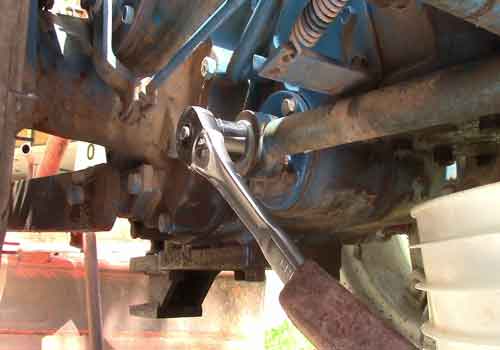
FAQ
How many speeds forward and reverse on a 1920 Ford Ranger?
There are three forward speeds and one reverse speed. Forward speeds are low, medium, and high. The reverse is used for backing up and turning around.
When did the Ford 1920 utility tractor come out?
The Ford 1920 utility tractor came out in 1921 and was called the Ford Model T truck. It was the first tractor with a diesel engine that was ever made.
Ford 1920 Tractor 3 Point Lift Bouncing, Hydraulic Problem / Fixed
Conclusion
The Ford 1920 tractor was one of the most popular models produced by the company. But also Ford 1920 Tractor Problems have. However, like all machinery, it was not without its problems. One common issue was that the engine would often overheat, especially when working in hot conditions.
Another problem was that the transmission would sometimes slip, making it difficult to get the tractor moving again once it had stopped.